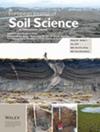Evaluating Statistical Distributions for Equivalent Conduit Flow in Suffusion Model of Cohesionless Gap-Graded Soils
Abstract
Suffusion is a typical form of internal erosion and a major cause of the degradation and failure of hydraulic structures. Suffusion-induced particle movement is a random process because of the statistical distribution of pore flows in soil. However, few studies have focused on the application of the statistical distribution of pore flow in the suffusion model. This study evaluates four statistical distributions of conduit flows to equate pore flow in calculating the soil particles movement rate in the suffusion model for cohesionless gap-graded soils. Multiple experimental data are collected to comprehensively evaluate the four distribution-based models with multiple variable changes during suffusion. The results show that the uniform distribution of the equivalent conduit flows is more accurate and reliable for gap-graded soils than the other three distributions are. Compared with previous studies, this article directly provides an applicable statistical distribution of pore flows, which simplified calculation steps and improved efficiency by explicitly calculating the particle movement velocity. Moreover, the uniform distribution has a concise formula; thus, it is recommended to estimate suffusion in unstable gap-graded soil. The accurate evaluation of statistical conduit flow is critical for the suffusion model because of its complete synchronicity with the particle movement rate. More attention should further be paid to the statistical distribution of pore flows, as the uniform distribution-based model may also generate deviations during the later period of the simulation.



 求助内容:
求助内容: 应助结果提醒方式:
应助结果提醒方式:


